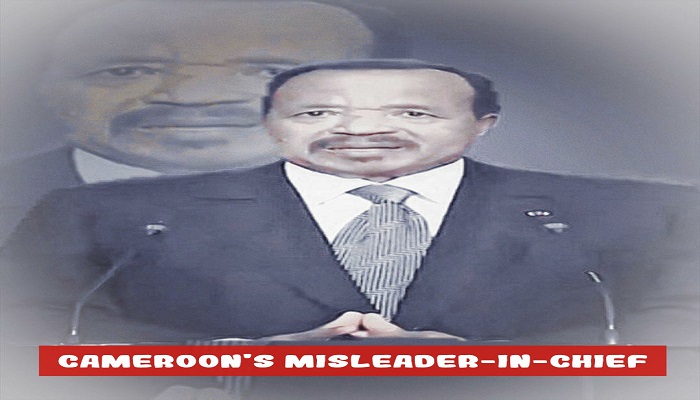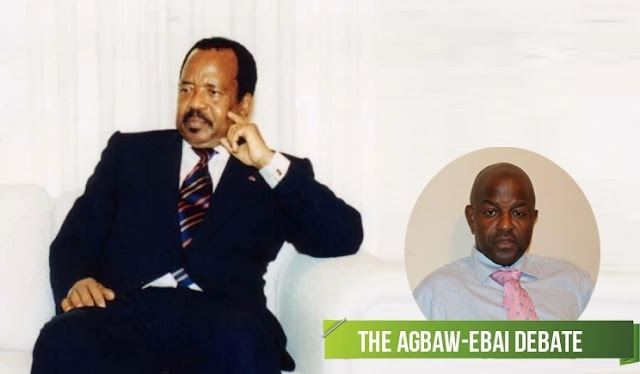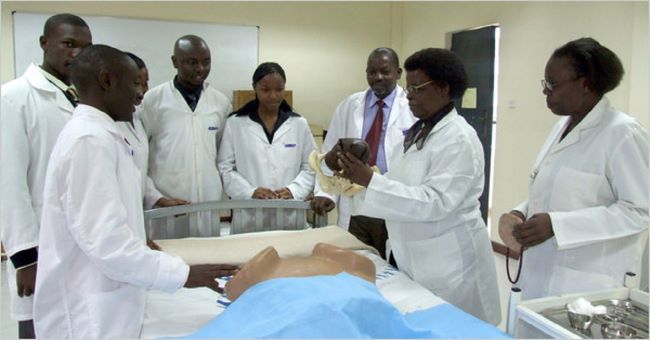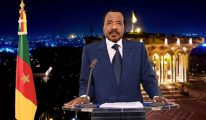Privacy Overview
This website uses cookies so that we can provide you with the best user experience possible. Cookie information is stored in your browser and performs functions such as recognising you when you return to our website and helping our team to understand which sections of the website you find most interesting and useful.


















16, May 2021
The war in Southern Cameroons and why the people of Ambazonia are fighting 0
by soter • Editorial, Headline News
Nota: Ambazonia is the indigenous name of the former United Nations trust territory of the Southern Cameroons under United Kingdom Administration for close to half a century, excluding the period of British connection with the territory from 1843 to 1887. When Republique du Cameroun took control of the territory, it split it into two parts and designated them as “northwest and southwest provinces/regions of Republique du Cameroun.” This was rejected and continues to be rejected by the people of the former British Southern Cameroons. The people of the territory insist on the indigenous name of their Homeland which is Ambazonia. This is consistent with a 1978 recommendation of UNESCO that African countries should call their countries by the name they wish to be known. Here, the designations ‘Ambazonia’ and ‘the Southern Cameroons’ are used interchangeably.
Background
Imposed plebiscite: The Southern Cameroons was one of the territories set for decolonization in the context of the UN decolonization agenda. Britain’s devious handling of it and the British wheeling and dealing at the UN in 1959 and 1960 caused a great historical injustice to the people of the Southern Cameroons. That injustice continues to cry out for redress. British action resulted in the unconscionable imposition of an unnecessary and precipitated plebiscite with dead-end alternatives. Speaking through Lord Perth, Britain shamefully said the Southern Cameroons and its people were “expendable”.
The plebiscite was imposed in the teeth of opposition by the leadership of the trust territory. It offered Hobson’s choice of ‘joining’ either Nigeria or French Cameroun. The internationally-prescribed political status option of sovereign independence was deliberately excluded. There was no good reason for doing so. On 11 February 1961, a skewed plebiscite was foisted on the people of the Southern Cameroons. Faced with the Hobson’s ‘choice’ that was forced down their throat, the people opted for independence in political association with Republique du Cameroun. It was agreed in writing between the two countries and to the knowledge of Britain and the UN, that the political association would take the form of an aggregative federation of two states, equal in status.
In 1959, hoping to sway the Southern Cameroons to associate with it rather than with Nigeria, Republique du Cameroun had taken the floor at the UN and had solemnly given the assurance to the world at large that it would not take advantage of its bigger size and population to annex the Southern Cameroons in the event of political association between the both countries. Shockingly, that country did exactly the opposite of what it had vouchsafed at the UN. It unilaterally framed, adopted and promulgated a ‘federal constitution’ creating the Federal Republic of Cameroon and asserting claim to the territory of the Southern Cameroons as part of the territory of Republique du Cameroun returned to it by the UN and the UK. In October 1961, Republique du Cameroun in effect took control of the Southern Cameroons, aided in that by Britain. It militarily occupied the territory and appointed one of its officials as officer administering who stepped into the shoes of the departed British Commissioner of the Southern Cameroons. It then started visiting the people of the Southern Cameroons with terror and cruel depredations: arbitrarily arresting and imprisoning, torturing, and killing at will, unchecked neither by law nor morality. At the same time, the territory was being looted and plundered. Spoliation of Southern Cameroons’ natural resources was entirely for the benefit of Republique du Cameroun. Cameroun 60-year colonial occupation, oppression and repression has been experienced by the people of the Southern Cameroons as far worse than anything ever experienced under British colonial rule.
Transfer of administration to French Cameroun. Before exiting the Southern Cameroons on 1 October 1961, Britain transferred powers to Republique du Cameroun rather than to the Southern Cameroons as ought to have been the case and as required under international law. This British self-confessed transfer resulted in the recolonization, rather than the decolonization, of the Southern Cameroons. Spain may have borrowed a leaf from Britain’s bad and illegal conduct when in 1975 it transferred administration of the Western Sahara to both Morocco and Mauritania and hurriedly left the territory. On 14 November 1975 there was concluded a Declaration of Principles on Western Sahara between Spain, Morocco and Mauritania, whereby the powers and responsibilities of Spain, as the administering Power of the Territory, were transferred to a temporary tripartite administration.
Formal annexation of Ambazonia: In 1972 Republique du Cameroun despotically ended the subterfuge of a federation and formally annexed the territory of the Southern Cameroons as part of its territory. The Government of the Southern Cameroons was dismissed and its parliament dissolved along with the police and the public service of the federated state. All property, including artefacts, official documents and other archives, belonging to the Government of the Southern Cameroons was vandalized, destroyed in situ or carted to Yaoundé and simply burnt to ashes. The reason for this barbarism was to erase any memory of the Southern Cameroons as a congener of statehood. Republique du Cameroun however continued to camouflage its predatory and expansionist politics under the cloak of what it instituted as the so-called ‘United Republic of Cameroun’. But even this pretense could not be maintained for long. In 1984 Republique du Cameroun informed the world that it had reasserted its identity as such. But incongruously, and in continuing defiance of international law, it kept up the fiction that the territory of the Southern Cameroons is part of the territory of Republique du Cameroun. Prior to October 1961, the Southern Cameroons never had any ties of any nature with that country. Moreover, the Southern Cameroons does not have, and has never had, any connection whatsoever with France, the parent state of Republique du Cameroun.
The War in Ambazonia
Since the 1970s, Southern Cameroons Civil society organizations and individuals periodically organized nonviolent protests and sent deputations and petitions to the Yaoundé authorities calling for the redress of legitimate grievances, including the ending of its colonization and annexation of the Southern Cameroons. These actions were always met with characteristic violent repression, imprisonment, torture, and killings. In 2016, Southern Cameroons’ lawyers, all in their wigs and gowns, staged a peaceful public demonstration calling for an end to the organized systematic destruction of Southern Cameroon’s common-law-based legal and judicial system. The reaction of Yaoundé was swift and ferocious. Gendarmes encircled the lawyers as they marched, battered them and ripped off their wigs and tore their gowns, arbitrarily arresting and imprisoning, and torturing many of them. Teachers and a consortium of civil society organizations soon joined the action by the protesting lawyers. They called for an immediate end to the bastardization of the English-derived system of education obtained in the Southern Cameroons. They also called for an end to the policy of pauperization of the Southern Cameroons and its people. Again, these actions were met with the most brutal response, including the deployment of armed soldiers who did not hesitate to shoot and kill.
When the population came out en masse with peace plants to protest these wanton killings, the soldiers fanned out all over the Southern Cameroons and visited the people – women, men, boys, girls, children, the old, the sick and the infirm – with despicable mayhem. But still the people came out in protest. Mr Biya, Cameroun’s 88-year-old President for 40 years, and then publicly declared that his troops would do what he has ordered them to do in the Southern Cameroons. And so, the four-year old war in Ambazonia was unleashed on the people of the territory by Republique du Cameroun in November 2017. Taken by surprise and never being prepared for war, the people found themselves having to defend themselves, their families, their communities and their territory literally with bare hands. They used pebbles, sticks, machetes and a few old rusty hunting Dane guns and gunpowder retrieved here and there.
The War in Ambazonia has already claimed at least 40 000 lives, almost all of them civilian children, men and women, murdered by Cameroun troops in a series of targeted killings, organized massacres, and killings by fire in over 400 villages burnt down to ashes across Ambazonia. Over half a million people have been forcibly displaced as refugees living in various countries and especially in refugee camps in Nigeria. Over another half a million people have become IDPs hiding in forests, caves and hills due to forced displacement. Additionally, over 1.5 million people are facing a humanitarian disaster.
Republique du Cameroun uses not only arson and the destruction of food, livestock, and crops in the fields as weapons of war. It also uses rape. Rape of Ambazonian women and girls by Cameroun troops is systematic and widespread. These agonizing situations are compounded by the fact that a high percentage of Cameroun troops are HIV positive and also have other STDs. When they rape they infect the women and girls. This appears to be part of the genocide agenda of Cameroun. Reports are now emerging of scores of school girls raped, impregnated and infected by Republique du Cameroun’s troops. This poses a nightmare not only of the HIV and STD infections but also of rampant teenage pregnancies. Cameroun troops have burnt down health facilities and killed health workers in rural and semi-urban areas. Accessing health facilities or health practitioners is a huge challenge for rural and semi-urban folks.
Why the people of Ambazonia are fighting
Self-determination under international law: The people of Ambazonia are fighting to vindicate their unquestionable and inalienable right of self-determination. They will continue to fight until self-determination is achieved. The right of self-determination is a norm of jus cogens. It is fortified by the internationally-secured territorial framework of the territory of Ambazonia, a framework standing firmly on two territorial treaty-based pillars.
Legitimate rejection of colonialism in any form, shape or manifestation: The fight of the people of Ambazonia also represents a strong and unyielding rejection of colonialism in any form, shape or manifestation. The rejection is consistent with international law which gives colonized people struggling for their liberation the right to the assistance of third parties.
Territory secured by boundary treaties: The territory of Ambazonia is safeguarded by international treaties. Ambazonia’s international boundary to the north and to the west down to the Bakassi Peninsula is well defined by, and is now demarcated on the basis of, the Anglo-German treaty of 1913 specifying the boundary between the British territory of Nigeria and the German territory of Kamerun. Ambazonia’s international boundary to the east is defined and demarcated on the basis of the Anglo-French treaty of 1916. The boundary alignment was endorsed in 1919 at the Treaties of Versailles, confirmed by the League of Nations in 1922, and reconfirmed by the Anglo-French treaty of 1931 respecting the boundary between the British Cameroons and French Cameroun. The territorial integrity of Ambazonia is thus firmly secured under international law.
Title to territory and the principle of uti possidetis juris: Sovereign title to the territory of Ambazonia belongs to the people of Ambazonia, and not to any other people. The people of Ambazonia are entitled to the integrity of their territory. And this means Republique du Cameroun, which achieved its independence from France on 1 January 1960, must respect the integrity of its own territory, respect the AU core principle of intangibility of African borders as obtained on the day of achievement of independence, and abandons its pursuit of the internationally wrongful conduct of territorial expansionism.
Historical parallels
There are illustrative historical parallels to the darkness that has befallen Ambazonia. The parallels are: Morocco’s occupation and attempt to annex the Western Sahara; Imperial Ethiopia’s occupation and attempt to annex Eritrea; Indonesia’s occupation and attempt to annex East Timor; and apartheid South Africa’s occupation, refusal to leave Namibia and attempt to annex it. Predictably, all these cases led to wars of national liberation. And in all of them each latter-day colonial occupier/oppressor lost.
A Cameroon Concord News and Cameroon Intelligence Report Production